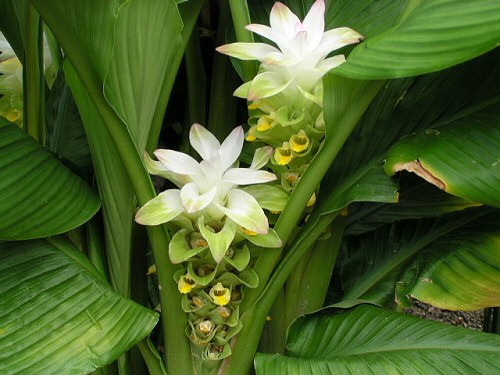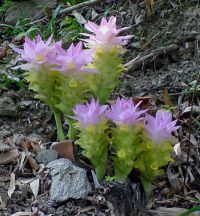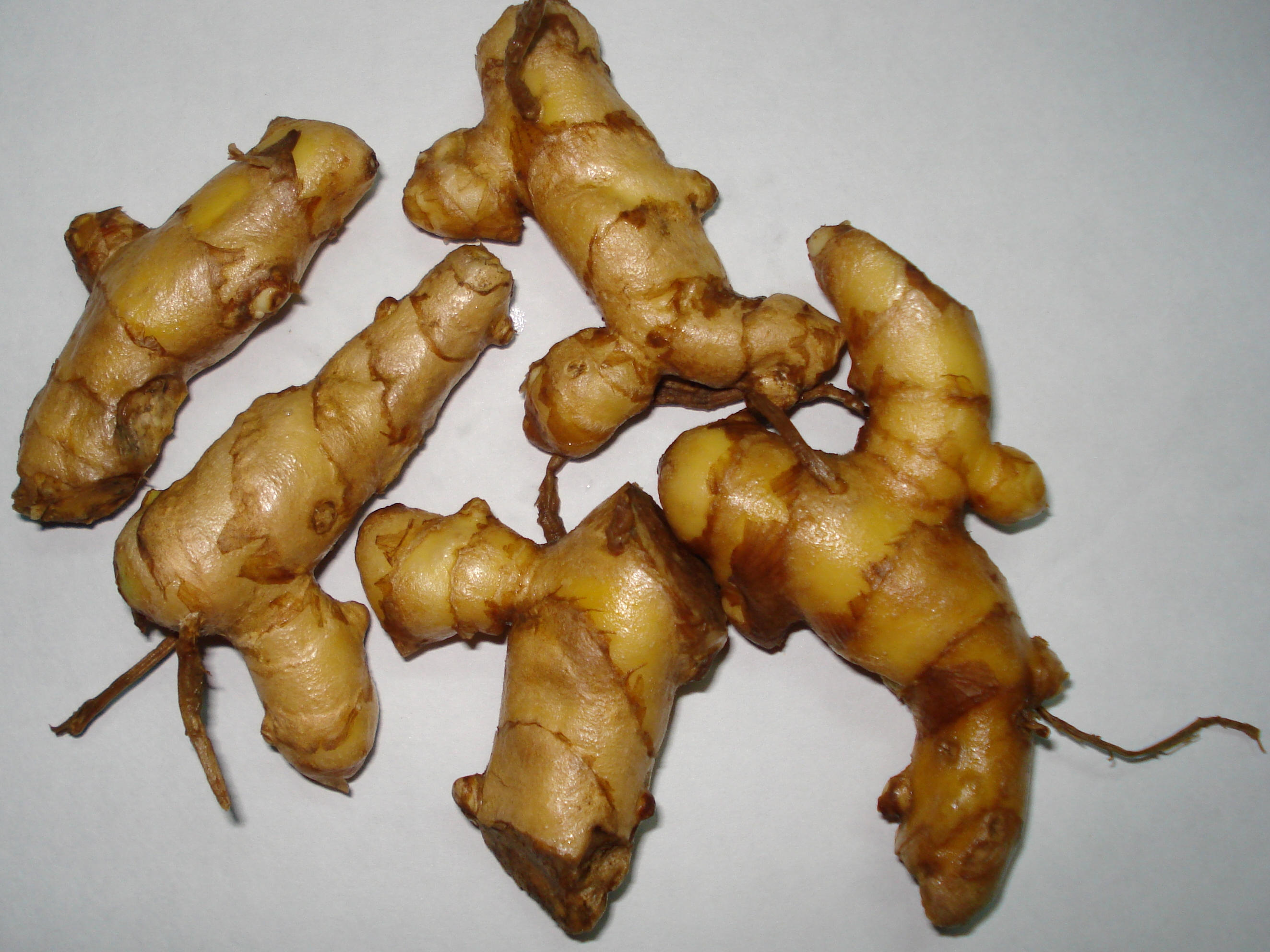Genus: Curcuma
|
Habitat: |
Found in tropical Asia, America and Africa. |
Feature: |
Pseudostems: absent.
Inflorescences: from rhizome branch without basal leaves,
dense, cylindric. Bracts: of main axis crowded, ovate to
narrowly ovate or rectangular. Cincinni: sessile, 2-7
flowered, enclosed in bracts. Bracteoles: small,
inconspicuous, hidden by bracts. Flowers: calyx
short-cylindric, minutely 2--3-toothed, split down one side.
Corolla: tube funnelform, lobes ovate or oblong,
filament rectangular, plane; anther enclosed in corolla, base spurred,
terminal appendage sometimes present, lingulate; lateral staminodes
large, petal-like, lip concave, rounded or 2-fid. Fruits
capsule: ellipsoid. |
Economic Importance: |
Curcuma is of great economic importance, with curcuma longa as the top notched in the genus along with
C. amada, C. angustifolia and C. zedoria
|
||
|---|---|---|---|---|---|---|---|
| Medicinal Importance: |
Certain members are used frequently for dyspepsia and
colic and are known to be anti-inflammatory, anti viral, anti-bacterial,
anti-fungal, anti-oxidant. The anticancerous drug from extract of Curcuma longa is under trials. | ||||||
Classification
| Curcuma | |
|---|---|
 |
|
| Curcuma | |
| Scientific classification | |
| Kingdom: | Plantae |
| Subkingdom: | Viridaeplantae |
| Infrakingdom: | Streptophyta |
| Division: | Tracheophyta |
| subdivision: | Spermatophytina |
| Infradivision: | Angiospermae |
| Class: | Magnoliopsida |
| Superorder: | Lilianae | Order: | Zingiberales |
| Family: | Zingiberaceae |
| Genus: | Curcuma |




Phylogenetic description
Curcuma is known to be morphogenetically variable but we have noticed the plastidsequence variation is low among the species. The reason behind this could be numerous such as recent diversification, intraspecific hybridization or result of vegetative propogation. The phylogeny of the genus is discussed in detail, HERE.Related publications
1) Phylogeny of Curcuma (Zingiberaceae) based on plastid and nuclear sequences: Proposal of the new subgenus Ecomata. Zaveska, Eliska; Fer, Tomas; Sida, Otakar; Krak, Karol; Marhold, Karol; Leong-Skornickova, Jana. Taxon, Volume 61, Number 4, 14 August 2012, pp. 747-763(17)2) Genetic relationship of Curcuma species from Northeast India using PCR-based markers. Das A, Kesari V, Satyanarayana VM, Parida A, Rangan L. Molecular Biotechnology. 2011 Sep; 49(1):65-76.
3) Ethnomedical uses of Zingiberaceous plants of Northeast India. Tushar, Basak S, Sarma GC, Rangan L. J Ethnopharmacol. 2010 Oct 28;132(1):286-96
<

